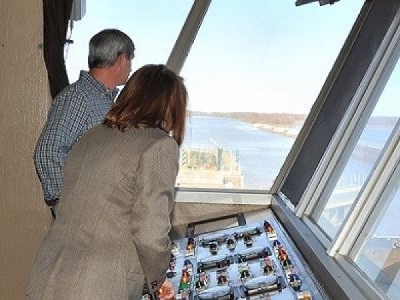
Posted on January 10, 2017
The U.S. Army Corps of Engineers (USACE) announced revised and renewed nationwide permits (NWPs) necessary for work in streams, wetlands and other waters of the United States under Section 404 of the Clean Water Act and Section 10 of the Rivers and Harbors Act of 1899. The new NWPs will take effect March 19, 2017, and replace the existing permits, which expire on March 18, 2017.
The 2017 nationwide permits have been published in today’s Federal Register at https://www.federalregister.gov/documents/2017/01/… and will be posted to the USACE Web site at http://www.usace.army.mil/Missions/CivilWorks/Regu…
“Our goal in developing and authorizing nationwide permits every five years is to update them, and provide clarity and certainty for the regulated public while protecting the aquatic environment. Our nationwide permits are an important tool in encouraging project proponents to avoid and minimize impacts to wetlands, streams, and other aquatic resources,” said Maj. Gen. Ed Jackson, USACE Deputy Commanding General for Civil and Emergency Operations.
The updated permits streamline the requirements of the Clean Water Act, and are informed by extensive feedback from the public and other key stakeholders. USACE is reissuing 50 permits and adding two new ones. These permits provide expedited review of projects that have minimal impact on the aquatic environment. Categories of activities that may be covered under the NWPs include linear transportation projects, bank stabilization activities, residential development, commercial and industrial developments, aids to navigation and certain maintenance activities.
The two new nationwide permits are NWP 53 and NWP 54. NWP 53 provides an appropriate mechanism for an efficient authorization process for the removal of low-head dams to restore streams and enhance public safety. NWP 54 covers the construction and maintenance of living shorelines to control erosion in coastal areas.
Notification requirements and impact limits have been revised for some permits to provide greater national consistency and foster making timely decisions for the regulated community. Effective decisions will be enhanced by interagency coordination on certain activities while continuing to maintain an expeditious process for all permit evaluations. All improvements, additions, and revisions to the package are consistent with the USACE commitment to evaluate minor activities efficiently while ensuring appropriate environmental protection for our nation’s aquatic resources.
Most of the nationwide permits announced today have no major changes from 2012, the last time the nationwide permits were authorized in accordance with the law.
USACE division commanders may add, after public review and consultation, regional conditions to nationwide permits in order to protect local aquatic ecosystems such as fens or bottomland hardwoods, or to minimize adverse effects on fish or shellfish spawning, wildlife nesting or other ecologically critical areas.
Division and district commanders are also charged with ensuring appropriate coordination and consultation occurs with federally-recognized American Indian and Alaska Native governments.
Highlights of the revised and new nationwide permits include:
• USACE reissued 50 existing permits and added two new ones.
• NWP 48 – The NWP 48 for Existing Commercial Shellfish Aquaculture Activities is revised to provide greater flexibility in its use. For example, NWP 48 now incorporates provisions that authorize activities that are consistent with other federal, state, tribal and local regulatory authorities. Incorporating these already authorized activities will reduce the number of activities that require review by individual USACE districts.
• NWP 53 – This new NWP covers the removal of low-head dams. The removal of these dams will restore rivers and streams, and will improve public safety by removing dams that can pose hazards to swimmers and to users of small recreational craft.
• NWP 54 – This new NWP covers the construction and maintenance of living shorelines, a technique to protect coastal property from erosion while providing some aquatic habitat and water quality benefits.
Additionally, NWP 26 has not been assigned since 2000, and NWP 47 was in effect for only one five-year cycle (2007 to 2012).
Additional information about the USACE Regulatory Program can be found at
http://www.usace.army.mil/Missions/Civil-Works/Reg…
Source: US Army Corps of Engineers





